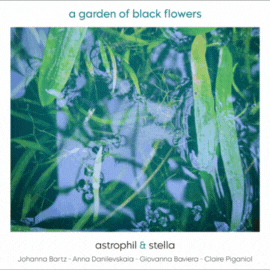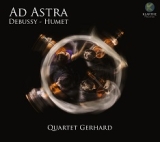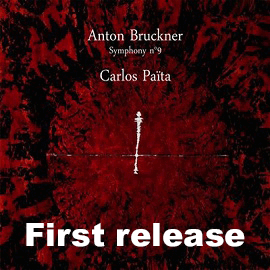Das Quartett von Debussy hat man lyrischer, weniger energisch, weniger ‘modern’ und glatter gehört. Das Quartet Gerhard sucht nach den dramatischen Effekten und gibt der Partituren die Spontaneität ihrer Inspiration zurück. Mit diesem direkten, scharfen und kraftvollen Spiel wird der erste Satz von Debussys Quartett neu belebt.
Die nachdenkliche Verinnerlichung mit wie schattenhaft aufleuchtenden Gefühlswallungen im Andantino führt zum zunächst noch ruhigen, dann immer leidenschaftlicheren Finalsatz.
Ramón Humet ist ein spanischer Komponist, der 1968 in Barcelona geboren wurde. Seine von der Natur und dem Zen beeinflusste Musik wurde von Pablo González als atemporal, leuchtend, farbenfroh, sehr meditativ und organisch bezeichnet. Das trifft sicher auf dieses Komposition ‘I fa l’aire visible’ zu, über die der Komponist sagt: « I fa l’aire visible (Und es macht die Luft sichtbar) verdeutlicht ein faszinierendes Naturphänomen. In einer ruhigen Vollmondnacht kann ein besonders intensives Licht den Raum so sehr erhellen, dass die Luft greifbar, dicht und sichtbar wird, als hätte sie eine körperliche Gestalt. Die Luft ist mit zwei gegensätzlichen Eigenschaften ausgestattet: einerseits mit der Dunkelheit und Stille, die die Nacht mit sich bringt, und andererseits mit einer sichtbaren Form im Licht. Diese doppelte Beschaffenheit der Luft veranlasste mich, die natürlichen harmonischen Intervalle zu erforschen, um eine Klangfülle zu erreichen, die hell und dunkel zugleich ist. Die hochpräzise Stimmung nach der harmonischen Reihe sorgt für einen unverfälschten Klang, der das Unsichtbare sichtbar macht. »
In zehn meist sehr kurzen Sätzen werden diese Eindrücke wiedergegeben. Das Gerhard Quartett wendet sein ganzes technisches Können und seine Ausdruckskraft auf und geizt nicht mit Einfällen und Engagement, um das alles hörbar zu machen.
Debussy’s quartet has been heard more lyrical, less energetic, less ‘modern’ and smoother. The Quartet Gerhard searches for the dramatic effects and restores to the scores the spontaneity of the composer’s inspiration. With this direct, sharp, and powerful playing, the first movement of Debussy’s quartet is given new life.
The pensive interiorization, with shadowy surges of emotion in the Andantino, leads to the, at first still quiet, then increasingly passionate final movement.
Ramón Humet is a Spanish composer born in Barcelona in 1968. His music, influenced by nature and Zen, has been described by Pablo González as extemporal, luminous, colorful, very meditative and organic. This is certainly true of this composition ‘I fa l’aire visible’, about which the composer says: « I fa l’aire visible (And It Turns the Air Visible) manifests a captivating natural phenomenon. In a quiet full moon night, especially intense light can brighten the space, so much so that the air becomes palpable, dense, and visible as if it possessed a corporeal form. The air is gifted with two opposite attributes: on the one hand, the darkness and silence that the night brings, and on the other, a visible form in the light. This double condition of the air led me to research the natural harmonical intervals to achieve a sonority that is bright and dark at the same time. The high-precision tuning according to the harmonic series provides a pristine sonority that makes visible what is invisible. »
In ten mostly very short movements these impressions are reproduced. The Gerhard Quartet expends all its technical skill and expressive power, and is not short of ideas and commitment to make it all audible.

























